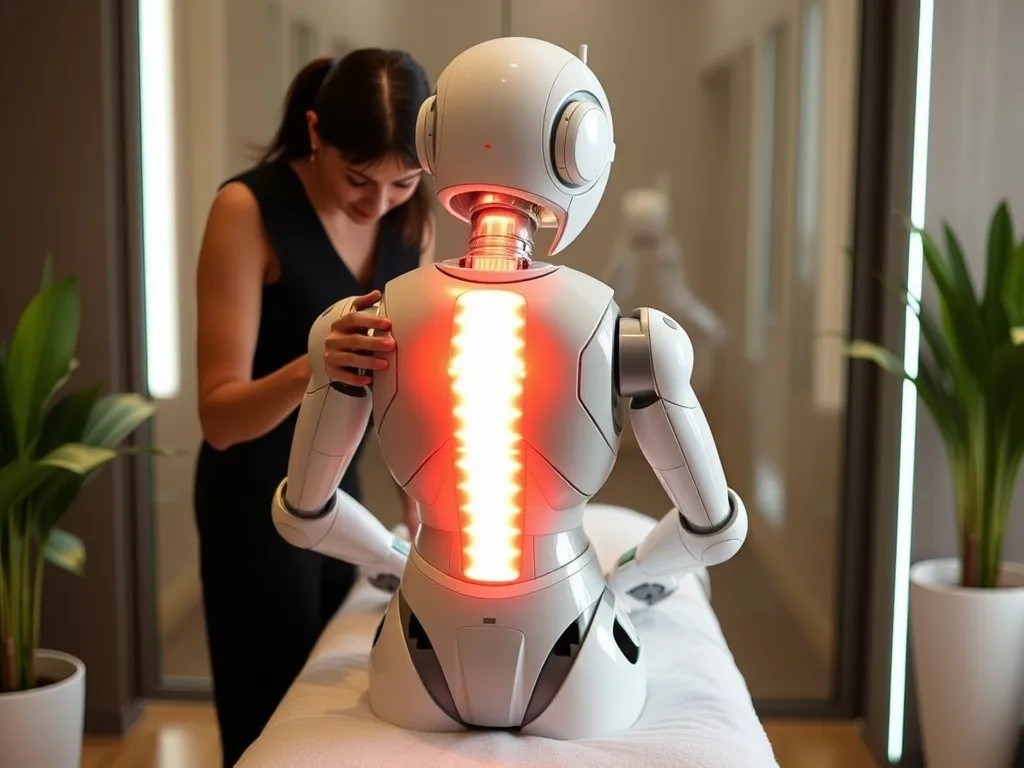In recent years, there has been a significant advancement in the field of Artificial Intelligence (AI) and Augmented Reality (AR). These technologies have become increasingly popular and have the potential to enhance virtual experiences in various fields such as gaming, education, healthcare, and...
Robot Masseuse Relieves Back Pain Better Than Spa Treatments

Chronic back pain affects millions of people worldwide, driving them to seek relief through various treatments. While traditional massage therapy has long been a popular option, a revolutionary robotic masseuse is proving more effective at targeting pain and providing lasting relief. Clinical trials demonstrate that these machines outperform human therapists in consistency, precision, and measurable outcomes.
The Technology Behind Robotic Massage
The robotic masseuse system combines advanced sensors, artificial intelligence, and sophisticated mechanical components. Before each session, the device scans the patient's back using thermal imaging and pressure sensors. This technology identifies areas of tension, inflammation, and muscle tightness with remarkable accuracy.
How the System Operates
The robot creates a detailed three-dimensional map of the patient's back, noting problem areas that require attention. Its AI algorithm then designs a customized treatment plan based on the specific issues detected. Multiple articulated arms with varying attachment heads deliver targeted pressure to affected areas.
Unlike human therapists who may tire or vary in technique, the robot maintains consistent pressure throughout the entire session. It can adjust its approach in real-time based on continuous feedback from its sensors, detecting when muscles begin to relax and responding accordingly.
Clinical Evidence of Effectiveness
A six-month study involving 300 participants compared outcomes between robotic massage, traditional massage therapy, and standard medical care for chronic back pain. The results were striking.
Key Findings from Research
- 78 percent of robotic massage patients reported significant pain reduction
- Only 52 percent of traditional massage recipients experienced similar relief
- Robotic treatments required fewer sessions to achieve results
- Pain relief lasted longer after robotic massage
- Patient satisfaction scores were consistently higher
Dr. Rebecca Torres, who led the study, explains the advantages. "The robot delivers perfectly calibrated pressure to exactly the right locations. Human therapists are skilled, but they cannot match this level of precision or maintain it throughout a 60-minute session. The data clearly shows superior outcomes."

Advantages Over Traditional Treatment
Beyond effectiveness, robotic massage offers practical benefits that make it an attractive alternative to spa treatments. The technology addresses several limitations of conventional massage therapy.
Consistency and Repeatability
Every session with the robot delivers identical quality. Human therapists have good days and bad days, and technique can vary between different practitioners. The machine eliminates this variability, ensuring patients receive optimal treatment every time.
Accessibility and Cost
While the initial equipment investment is substantial, robotic massage treatments cost significantly less per session than high-quality spa massages. Facilities can operate extended hours without staffing concerns, making treatment more accessible to people with demanding schedules.
Objective Measurement
The system tracks progress over time, comparing scans from multiple sessions to document improvement. Patients and healthcare providers can review this data to assess treatment effectiveness and adjust approaches as needed. This level of documentation is impossible with traditional massage.
Patient Experiences
Michael Anderson suffered from lower back pain for eight years, trying numerous treatments with limited success. "I was skeptical about a robot, but after my first session, I was amazed," he reports. "The machine found trigger points I didn't even know I had. After six treatments, my pain decreased by about 70 percent. My physical therapist noticed improvements in my mobility too."
Lisa Patel, a software engineer, appreciates the convenience. "I can book late evening appointments when spas are closed. The robot doesn't get tired at the end of the day, so I receive the same quality treatment whether I schedule at noon or 10 PM. Plus, I can track my progress through the app, which helps me stay motivated."
Integration with Healthcare
Medical professionals are beginning to prescribe robotic massage as part of comprehensive treatment plans for back pain. Insurance companies are taking notice of the positive outcomes and cost-effectiveness. Several major insurers now cover robotic massage sessions, recognizing them as legitimate medical treatment rather than luxury spa services.
Physical therapists are also incorporating the technology into rehabilitation programs. The precise documentation and measurable results align well with evidence-based medicine practices.
Future Developments
Developers are expanding the technology's capabilities. Upcoming versions will treat neck pain, shoulder tension, and other musculoskeletal issues. Integration with electronic health records will allow better coordination with overall patient care.
Researchers are exploring how the technology might benefit specific populations, including athletes, elderly individuals, and people with chronic conditions like fibromyalgia. Early results from these investigations appear promising.
The Future of Pain Management
Robotic massage represents a significant advancement in non-pharmaceutical pain management. As the technology becomes more widespread and affordable, it may reduce reliance on pain medications while providing superior relief. For the millions suffering from back pain, this innovation offers genuine hope for improved quality of life through accessible, effective treatment.



